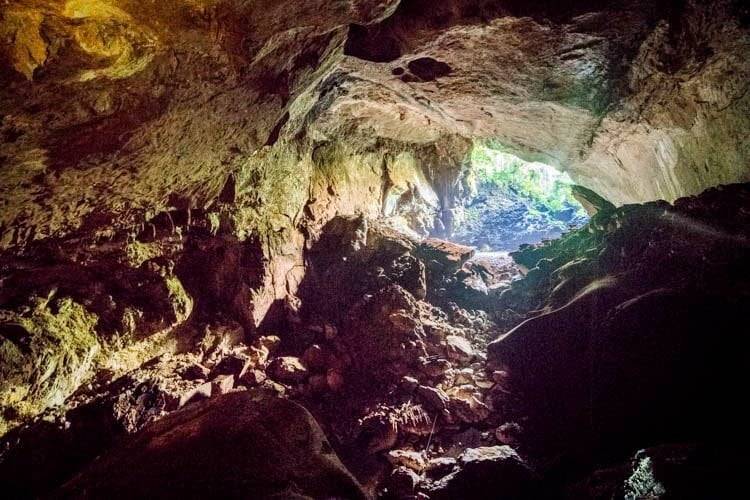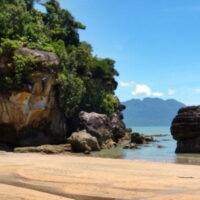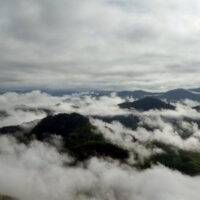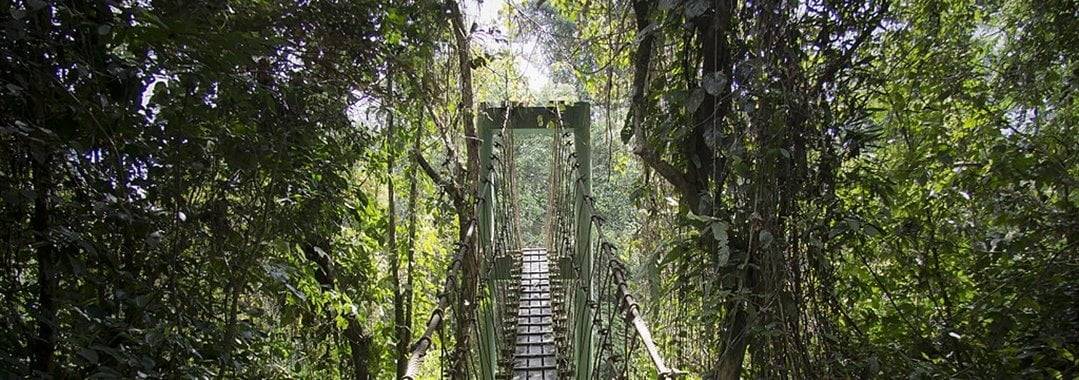
Gunung Mulu National Park – Complete travel guide
Last Updated on November 5, 2022
Trekking in Gunung Mulu National Park was one of my best adventures but also one of my worst. I always forgot I don’t really like trekking, especially in tropical climates when you’re already wet with sweat before even having taken your first step. Mulu was no exception, it was terrible, but it also amazing and I’m glad I did it.
I did the Deer and Lang Caves tour, well it was hard, but it wasn’t the worst part for me. We crossed the cave, walking for about 2km with parts you had to crawl or hike up while being knee´deep into bat shit (I exaggerate, but there were a lot of it, and well, touching you). So, that was pretty bad. The good thing is that when you exit the cave, you cross a deep river, so it all wash up. On the way back, I was so over it, I don’t even recall the bat shit bothering me anymore. I did feel dirty for about three days after this though.

It was also great because it made me push myself and get out of my comfort zone; which, I think, is one of the best parts about traveling. Everything was beautiful, the cave, the jungle, the plants (we saw carnivorous ones), and the waterfall at the end of the trek. From my two years traveling in South East Asia, Borneo has been my favorite, for its wilderness, for its diversity, and for its unique culture.
What I also loved about Mulu National Park is that they group you with other people to do the treks requiring a guide. This way, you don’t have to break the bank to hire a guide all to yourself if you’re solo traveling or a small group.
Disclaimer: this post contains affiliate links, which means that if you click on any links and make a purchase, I’ll get a small commission, at no cost to you.
About Gunung Mulu National Park
Mulu National Park is literally in the middle of nowhere, the only way to access it is by flying. When you fly over it, the view is spectacular, just the river meandering through a lush jungle.
The park is famous for its pinnacles you can climb during a 3-day tour. Only advanced hikers can undertake this climb. It’s also home to one of the world’s largest cave passages (the one full of bat poop).
The village there is small, and it mostly consists of guesthouses. People living there either work at the park or are linked to tourism. It’s a super quiet place, you’re surrounded by jungle, there are almost no cars, and electricity doesn’t even run 24/7.
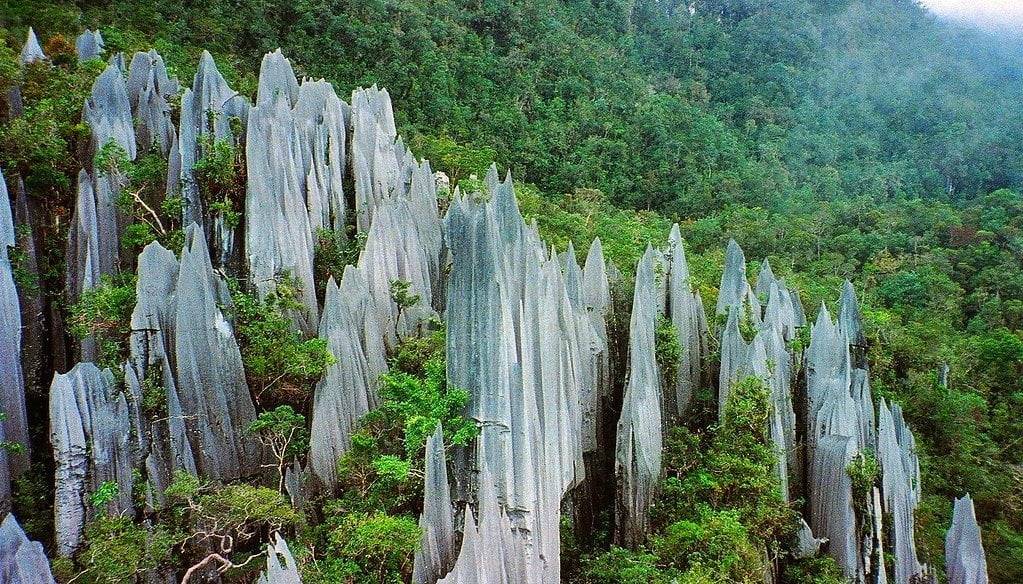
At the park, there are tons of different treks you can choose from. Some easy, you can do on your own, some harder or longer. You can arrange for a 2 or 3-day trek, camping at one of the park’s campsites. You can trek to waterfalls, go on a night trek, a botanical trek, or visit caves. Check their website to see all the different options available.
Gunung Mulu Caves
Mulu caves are must-sees, you should try to see at least one. Amongst the Mulu caves you can visit are:
- Deer and Lang Caves: one of the world’s largest cave passage, with ceilings as high as 100 meters in some parts. The tour includes the visit to the caves, with the possibility to watch the bat exodus at the end.
- Clearwater Cave and Cave of the Wind: you’ll need to start this Mulu Cave tour by a boat ride to reach the first cave then trek to the second one. You can swim in the river emerging from the cave. Clearwater is one of the biggest cave systems in the world, measuring over 220km in length, but you’ll only see a small portion of it.
- Fastlane Cave: torchlight visit of this incredible cave where pre-historic sediments, including a volcanic ash layer, can be found as well as tons of interesting wildlife (bats, crabs, insects…)
In Mulu, caves are relatively easy to visit (if you don’t mind bat poop), there’s often a platform to walk on, and there’s lighting inside. The park also offers more adventurous explorations of the caves, but you’ll need to have experience in spelunking and of course a good fitness level.
Best time to visit Gunung Mulu National Park
Mulu can be visited year-round, the climate is more or less the same (super humid). During high season (June, July, August, September) and holiday periods make sure to book your accommodation and tours in advance.
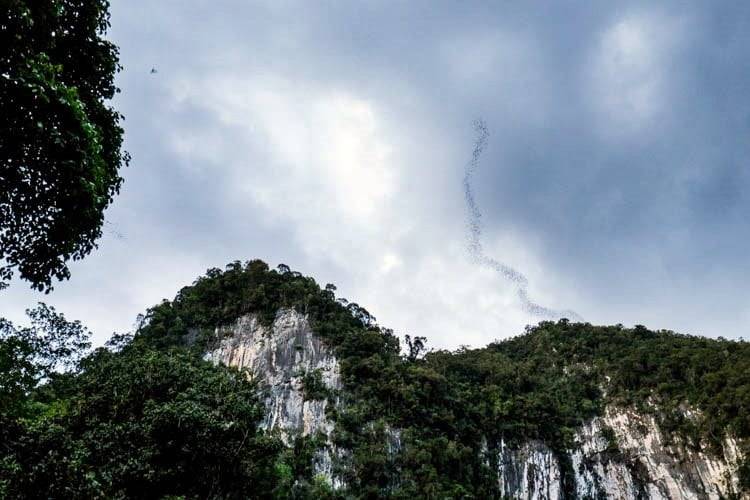
How to get to Gunung Mulu National Park
As I said, the only way in is by flying, or through the river if you have time and money to spend. There’s no regular boat, but you can charter one for a hefty fee.
Maswing and Malaysia Airline offer daily flights to Mulu National from Kota Kinabalu, Miri, and Kuching. Keep in mind when scheduling your trip that weather often impacts flights. I also suspect they cancel flights if there’s not enough booking. It happened to me, I had booked the morning flight out of Mulu, and when I got there the flight was canceled, they didn’t give any reasons, but we were only two waiting at the airport…
How many days do you need in Mulu?
I would recommend 3 days/2 nights, but it depends on the treks you want to do. If you’re on a tight schedule 1 full day/2 nights is doable if you only do one trek.
What to bring to Mulu National Park?
- A refillable water bottle
- Good walking shoes that can get wet
- A pair of binoculars
- Long pants
- Mosquito repellent
- A swimsuit
Where to stay in Mulu National Park?
The park doesn’t offer accommodation. There’s a wide range of hotels available outside the park. From a bed in a dorm to staying at a luxury resort (yes, there’s a Marriott), you’ll find what you need. Apart from the Marriott, accommodations are pretty basic. Here are a few options:
AA Homestay: cheapest option, basic private rooms, some with private bath, great location (5-minute walk to the park and 1km from the airport), clean, fresh at night.
Benarat Lodge: Good (and only) mid-range option, modern rooms with AC, bar, breakfast included, they can make your lunch upon request, free shuttle to/from the airport but a bit far from the park’s entrance.
How much does it cost to visit Mulu National Park
The entrance fee is RM 30 for the 5-day pass (10 for children). The costs of the treks vary from RM35 to RM433 per person depending on what you want to do (there are trails you can do unguided, so it’s free). Accommodations vary from less than US10 for a dorm bed to US100+ for a room at the Marriott. Food is a bit more expensive from the rest of Malaysia but not that much. You should pack fruits and snacks before going as the price of those can be high in Mulu.
Related articles to help you plan your trip:
- Malaysia – Everything you need to know before going
- 2-week itinerary in Borneo
- 8 adventures in Kalimantan
- Bako National Park Complete Travel Guide
Like it? Save it for later:


